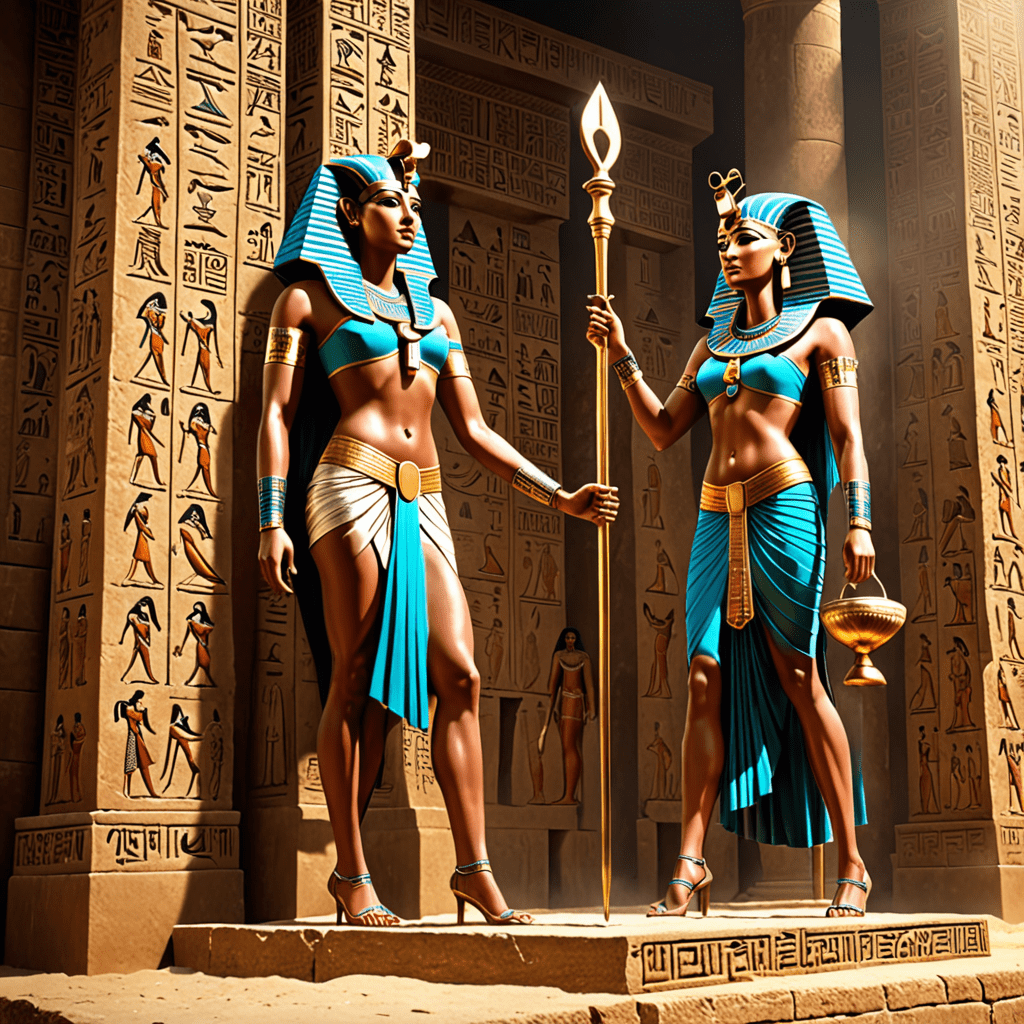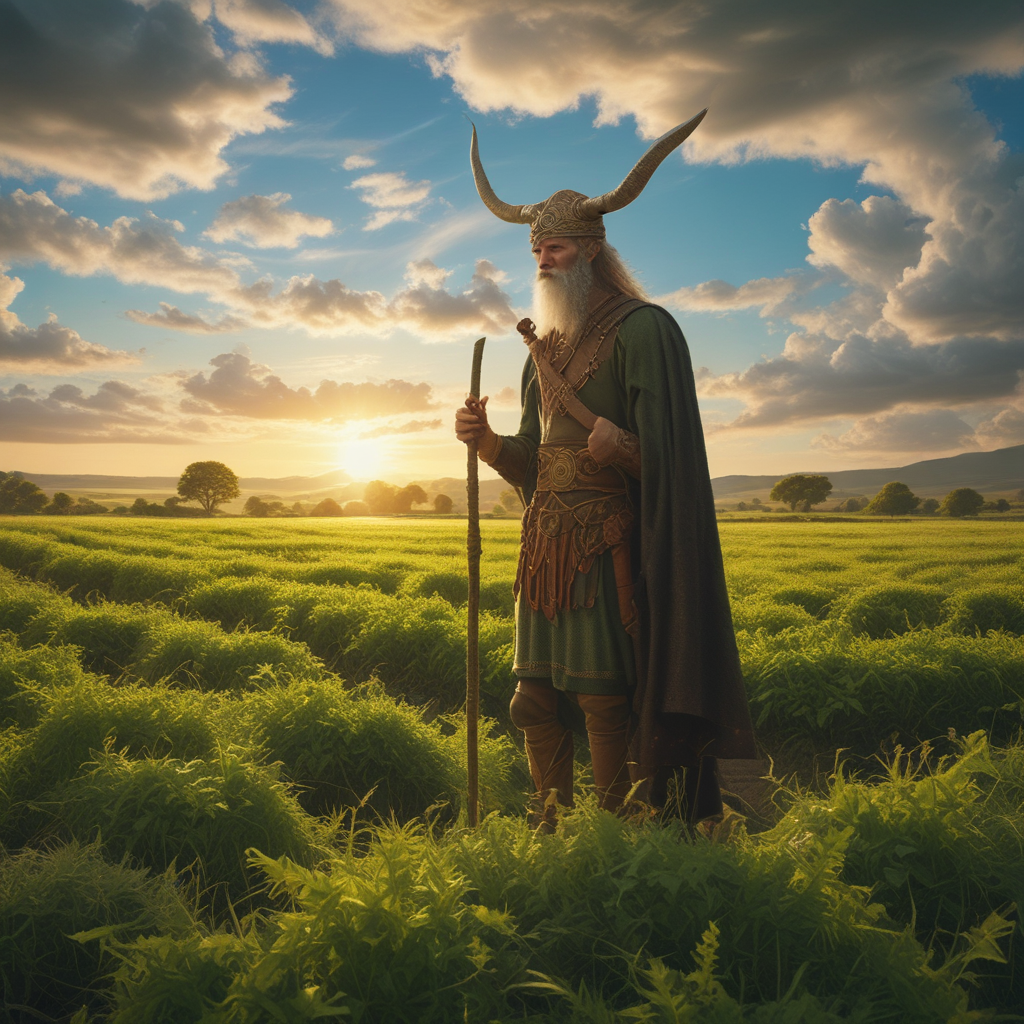The Role of Animals in Persian Mythological Stories
1. Introduction
The ancient land of Persia boasts a rich tapestry of mythology, deeply interwoven with its cultural fabric. This mythology is renowned for its vibrant narratives, captivating characters, and profound symbolism. Notably, animals play a central role in these tales, serving as more than mere creatures; they represent potent symbols, loyal companions, fantastical beings, and embodiments of fundamental beliefs.
The unique relationship between humans and animals in Persian mythology reflects a deep respect for the natural world and its intrinsic connection to human existence. Animals are not merely background elements; they actively participate in shaping the course of events, influencing the lives of heroes, and embodying timeless values. Through their multifaceted roles, animals imbue these myths with profound meaning and enduring relevance.
2. Animals as Symbols and Messengers
In Persian mythology, animals often transcend their physical forms, becoming potent symbols embodying specific virtues and characteristics. The lion, for instance, symbolizes strength, courage, and royal authority. The eagle, soaring high above the land, represents wisdom, divine inspiration, and connection to the heavens. Conversely, the serpent embodies duality, often representing both wisdom and deception, fertility and destruction.
These symbolic animals frequently serve as messengers of the gods, bridging the gap between the divine and the earthly realms. They deliver warnings, guide heroes on their quests, and reveal hidden truths. Their presence infuses the narratives with a mystical dimension, imbuing them with a sense of the sacred and the transcendent.
3. Animals as Companions and Guides
Beyond their symbolic roles, animals emerge as loyal companions and trusted guides to heroes and protagonists in Persian mythology. The horse, symbolizing both swiftness and unwavering loyalty, often accompanies heroes on their perilous journeys, faithfully carrying them through treacherous landscapes and assisting them in their endeavors.
Equally significant are the roles of birds, such as the falcon and the raven, who act as guides and messengers, providing heroes with essential guidance and wisdom. These animal companions embody unwavering support and invaluable assistance, highlighting the importance of human-animal bonds in navigating the challenges of life's journey.
6. Animals in Epic Tales and Poetry
Animals hold a prominent place in Persian epic tales and poetry, most notably in the Shahnameh, the national epic of Iran. In these narratives, animals embody specific traits, influencing the course of battles and shaping the narrative. The horse, once again, emerges as a symbol of loyalty and courage, carrying heroes like Rostam into battle and embodying their unwavering spirit.
Other animals, such as the wolf and the dragon, represent formidable adversaries, symbolizing the challenges and dangers that heroes must overcome. Through their interactions with these animals, heroes demonstrate their strength, cunning, and resilience, proving their worthiness as legendary figures.
Animals in epic tales and poetry often transcend their literal roles, becoming metaphors for human emotions and desires. The wounded deer, for instance, can symbolize vulnerability and heartbreak, while the predatory lion represents ambition and determination. By imbuing animals with human traits, these narratives explore complex themes of life, death, love, and loss, adding depth and resonance to the epic tales.
7. The Role of Animals in Zoroastrianism
In Zoroastrianism, an ancient Persian religion, animals hold a significant place in beliefs and rituals. Specific animals are considered sacred, representing purity, beneficence, and connection to the divine. The cow, for example, symbolizes fertility and abundance, while the dog represents loyalty and vigilance. These animals are revered and protected, reflecting the Zoroastrian belief in the sanctity of all living beings.
Animals also play a role in Zoroastrian rituals and ceremonies. The sacrifice of a bull, for instance, is considered a sacred act, symbolizing purification and the renewal of life. The presence of animals in Zoroastrianism highlights the interconnectedness of the natural world and the spiritual realm, emphasizing the importance of respecting and honoring all forms of life.
8. Animals in Persian Art and Architecture
Animals find rich expression in Persian art and architecture, adorning everything from intricate miniature paintings to majestic architectural structures. In miniature paintings, animals often appear alongside human figures, adding dynamism and symbolism to the narratives depicted. Lions, tigers, and birds adorn the borders of these paintings, representing power, grace, and the interconnectedness of nature.
In architecture, animals serve both symbolic and aesthetic functions. Lions and bulls guard the entrances of palaces and mosques, symbolizing protection and strength. Birds and floral motifs adorn decorative tiles, adding beauty and a sense of serenity to the architectural spaces. The presence of animals in Persian art and architecture reflects the deep appreciation for the natural world and its profound influence on cultural expression.
9. The Enduring Legacy
The role of animals in Persian mythology extends far beyond mere storytelling. These creatures, imbued with symbolism, wisdom, and companionship, have shaped cultural values, influenced artistic expression, and guided spiritual beliefs for centuries. Their enduring legacy underscores the profound connection between humans and the natural world, a connection that continues to resonate in modern-day Iran and beyond.
10. Frequently Asked Questions (FAQs)
1. What are some of the most important animals in Persian mythology?
- The lion, the eagle, the serpent, the horse, and the falcon are among the most prominent animals in Persian mythology.
2. How do animals symbolize different virtues and characteristics?
- The lion represents strength and courage, the eagle embodies wisdom and divine inspiration, the serpent symbolizes duality, the horse signifies loyalty and swiftness, and the falcon represents guidance and clarity.
3. What are some examples of animals as guides and companions in Persian myths?
- The horse, the falcon, and the raven frequently appear as loyal companions and guides, assisting heroes on their journeys and offering essential guidance.
4. How do animals influence the narratives in Persian epic tales and poetry?
- Animals in epic tales and poetry embody specific traits, influencing the course of battles and shaping the narrative. They serve as metaphors for human emotions and desires, adding depth and resonance to the stories.
5. What is the significance of animals in Zoroastrianism?
- In Zoroastrianism, animals are considered sacred and represent purity, beneficence, and connection to the divine. The cow and the dog are particularly revered for their symbolic qualities.



